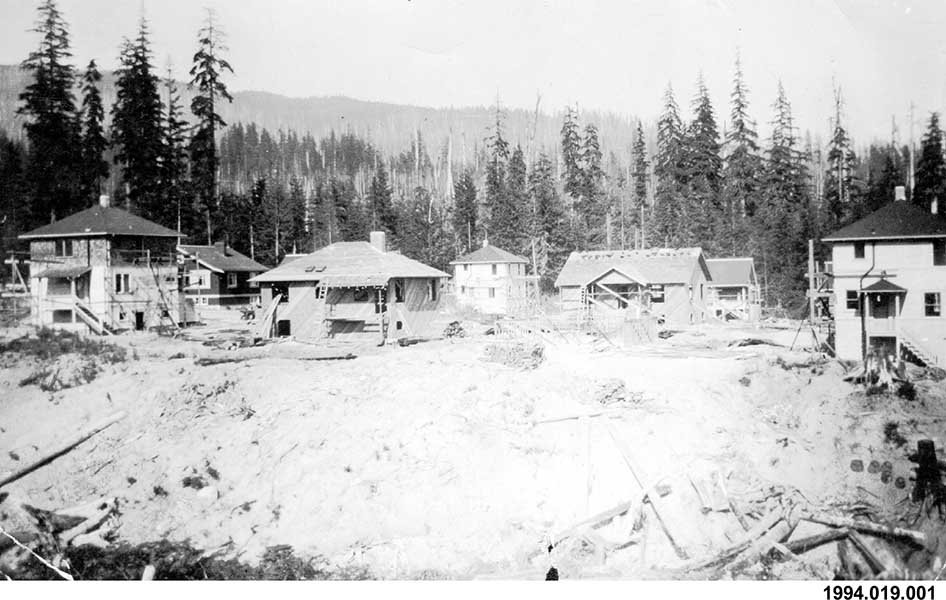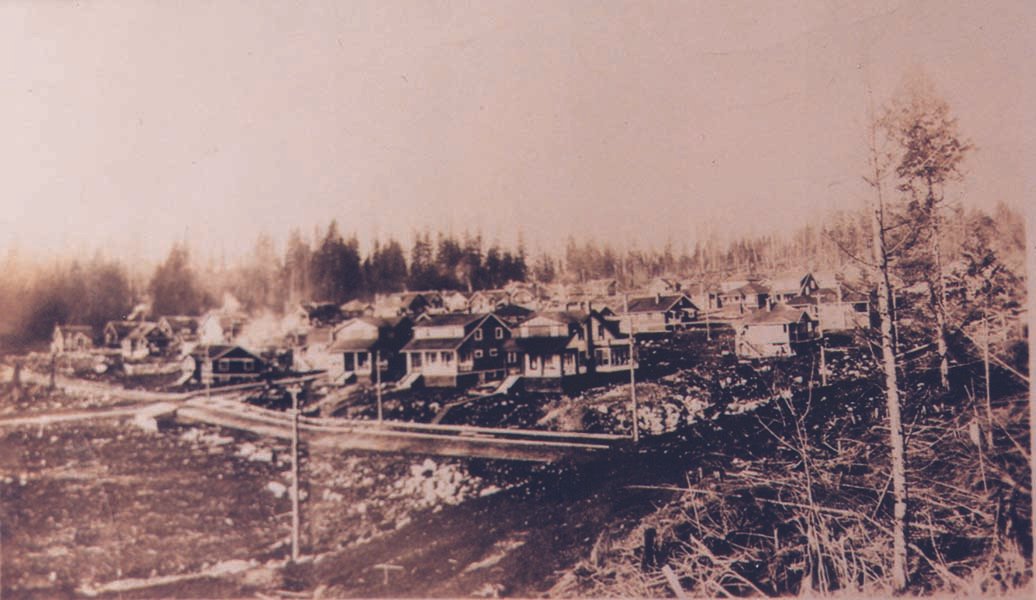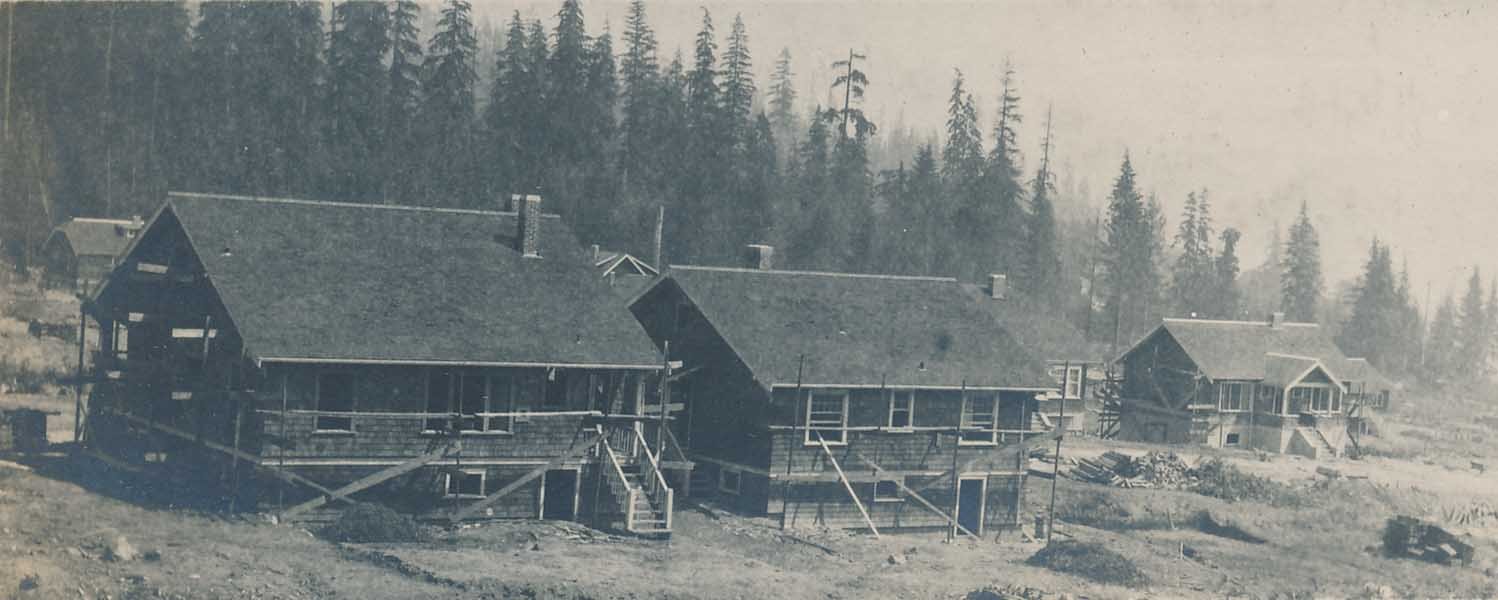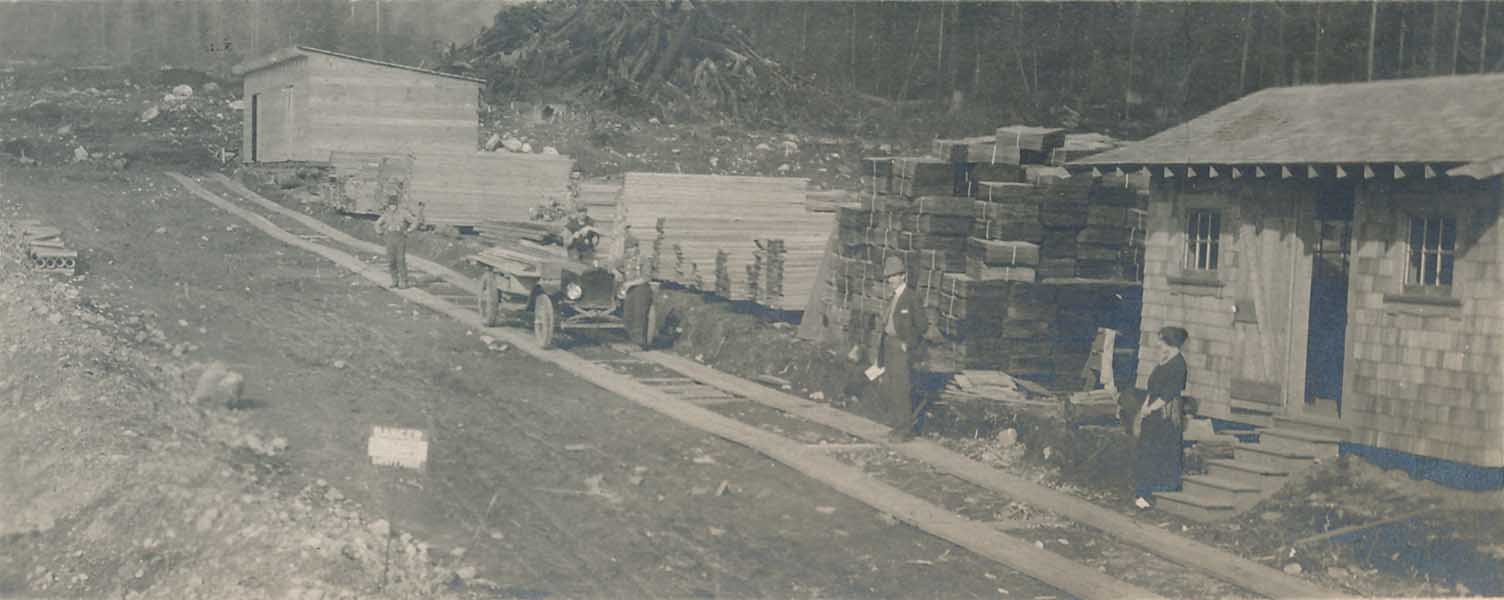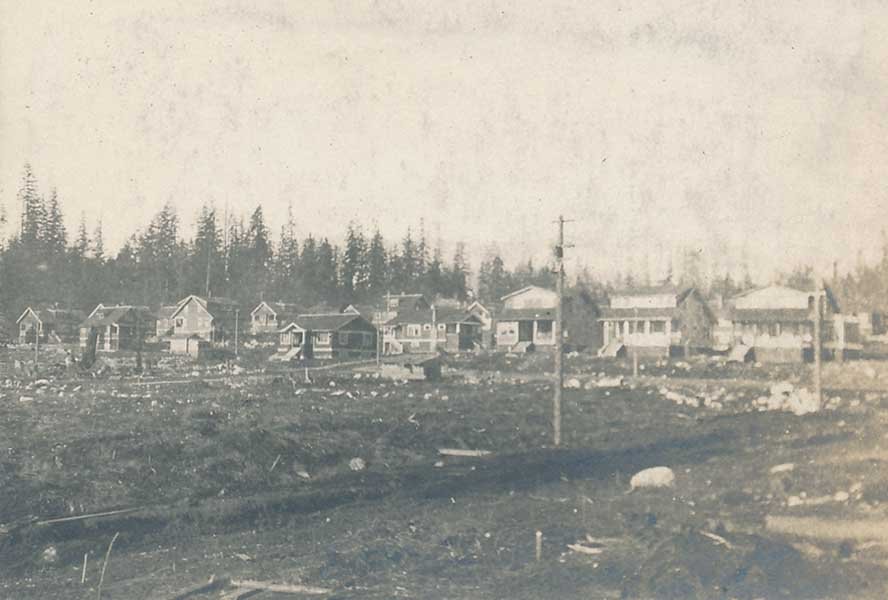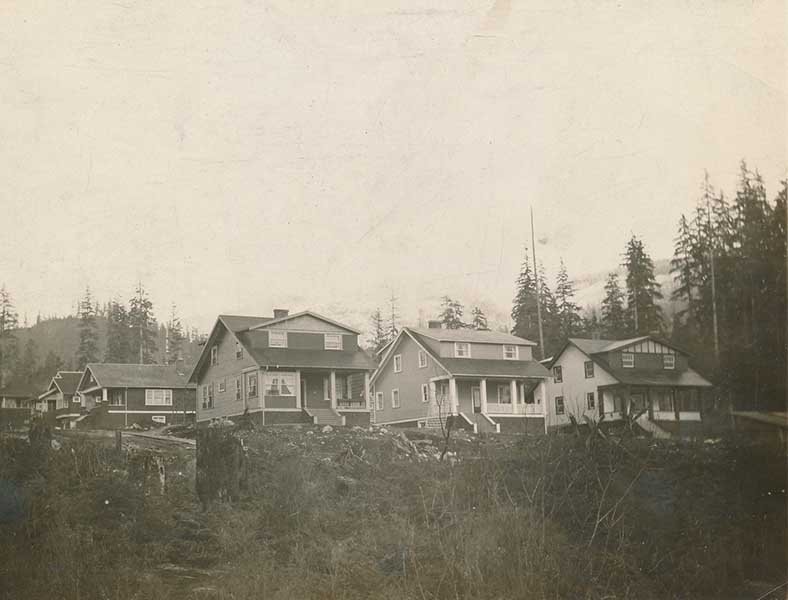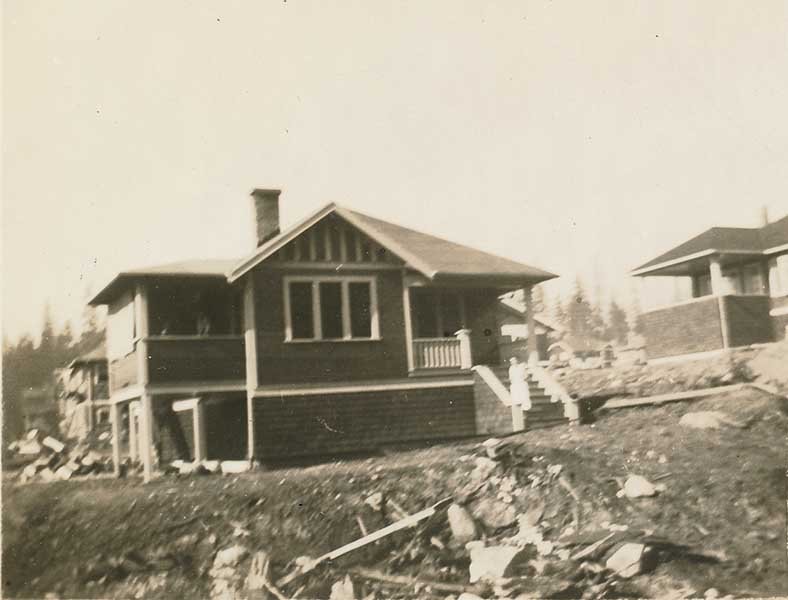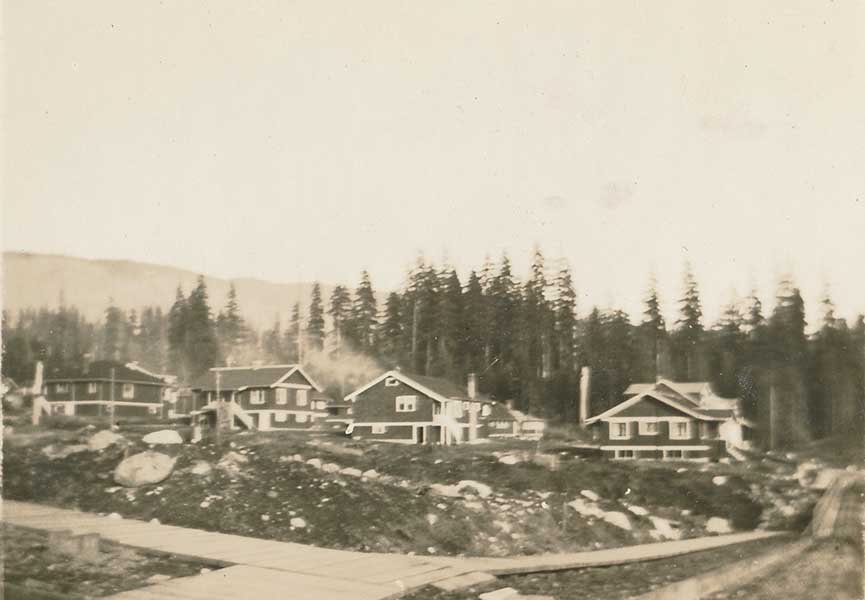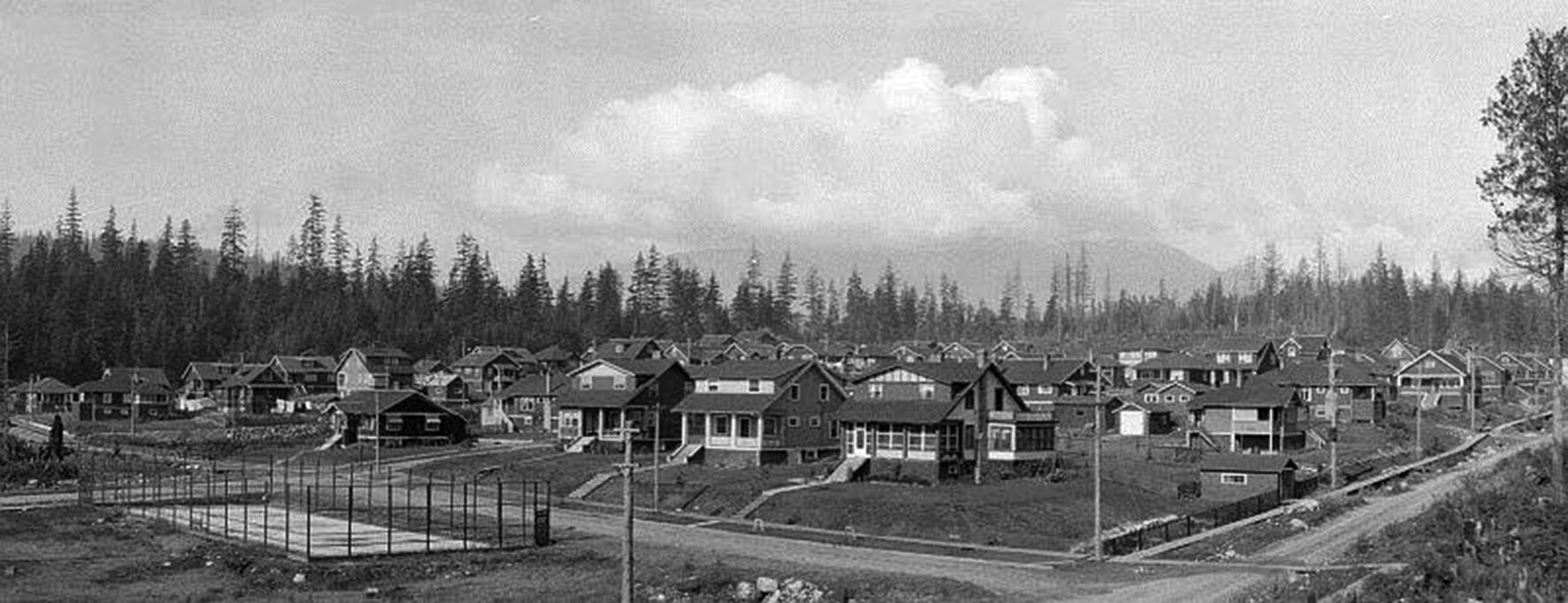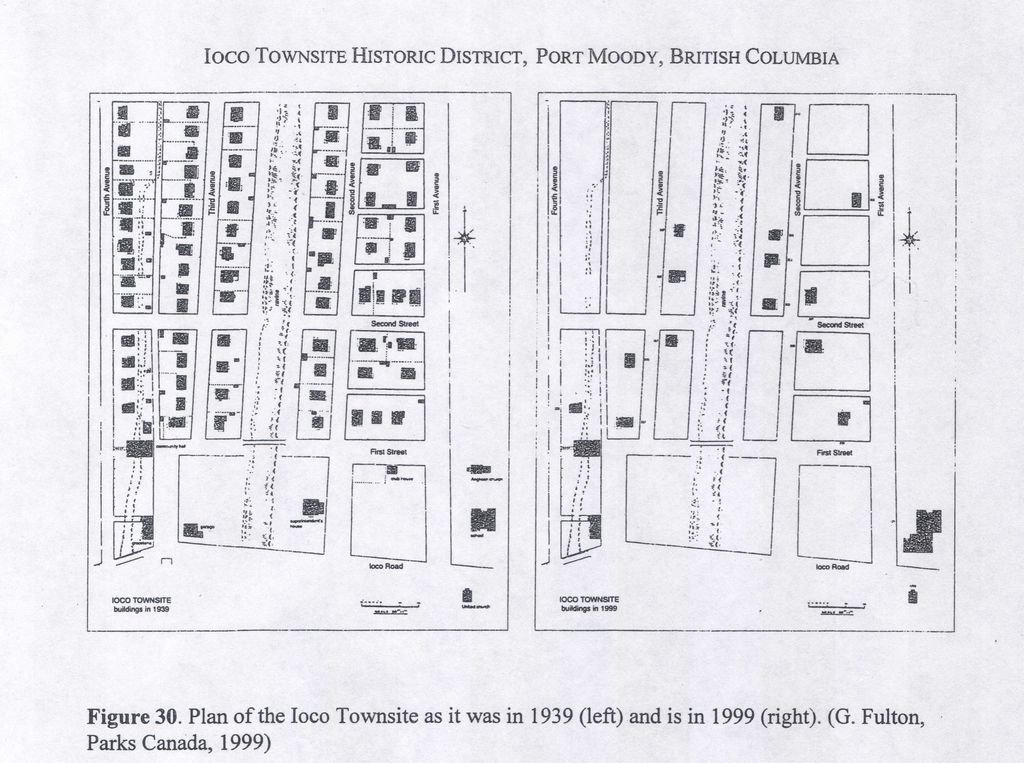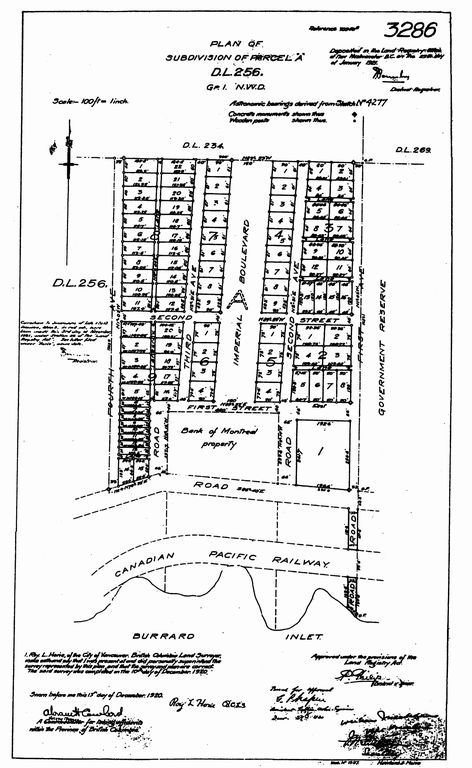Townsite
IOCO Memories
Chapter 4
With the population growing, a movement towards establishing a proper town began. Imperial Oil wanted to buy a large block of crown land in order to build a town site but the federal government refused to sell the property as the Great War was on and the land was deemed a military reserve. In frustration, Imperial Oil purchased the land from a private seller on which the present Ioco townsite was built.
The land was cleared and housing construction began in 1920. The first fifteen houses on site were the cottages from the refinery site, which were towed to their new location. The homes were built by Dominion Construction on 60 by 90-foot lots. There were 6 basic house plans, modified for prospective owners.
Between 1920 and 1924 eighty-three houses were built or moved – all with indoor flush toilets, a real luxury at the time! With more employees than available housing, homes were assigned by drawing lots. On completion, the houses were sold to the winning employees through payroll deductions. All purchases were on the condition that Imperial Oil would retain first right of refusal on any sale of the townsite’s buildings.
In 1921, the company provided funds to construct a community hall and a commercial building with a Groceteria. With families moving in, a school was also needed and in 1921 the town had a 4-room public school erected by the Provincial Department of Public Works. They added a lawn bowling green in circa 1926, a club house in 1937, two tennis courts, a horse-shoe pitch, baseball fields, picnic areas and gardens.
The community thrived between 1925 and 1958. Even though the town’s residents were close, they were still isolated, and with the gradual improvement to Ioco Road and the widespread availability of automobiles after the Second World War, individuals began to seek other places to live. Since Imperial Oil had retained first right of refusal on any sale of the townsite’s buildings, they decided in the mid 1950’s to exercise that right, and to purchase and dispose of the houses as they came onto the market. The company’s objective was to create a buffer zone between the refinery and any encroaching urban development. One by one or in groups, the houses gradually disappeared.
In the 1960’s a dozen houses were moved to a new privately owned subdivision in Anmore, two kilometers north of the town site. The refinery manager’s house was shipped away to Port McNeal.
In July 1994, the Groceteria was closed and the community hall was boarded up. Many of the houses were torn down or moved. The City of Port Moody began annexing Ioco in 1988 and officially annexed in 1993.
In 1995, Imperial Oil closed the town site’s connection to the refinery and put it in the hands of their real estate division.
In 2002, Port Moody passed a bylaw making the town site a Heritage Conservation Area, maintaining and protecting it from further demolition. In January of 2015 Brilliant Circle Group (BCG) now Gilic Incorporated of Vancouver purchased the western part of the Ioco town site as part of a 232-acre purchase of land in Anmore and Port Moody from Imperial Oil.
A few years after the Ioco refinery opened, plans for a town site adjacent to the plant were drawn up. Land was surveyed in December 1920 and registered in the New Westminster Land Registry Office on January 25th, 1921. In total, after construction, the town site consisted of 83 houses, 2 churches, a community hall, a general store, a four roomed school, a lawn bowling green and club house, tennis courts, baseball diamonds, and a horseshoe pitch.
Clifford McGowen
Oh it was cold because we had no furnace. We had an oil burner on the kitchen stove that gives about as much heat as a candle. Then we had a fireplace. Cut wood and burn it in the fireplace but that didn’t heat much either. And then underneath it was all open. It was built up on stilts, you could walk underneath it. In the winter time, we have linoleum on the kitchen floor, and there’d be ice on it.
